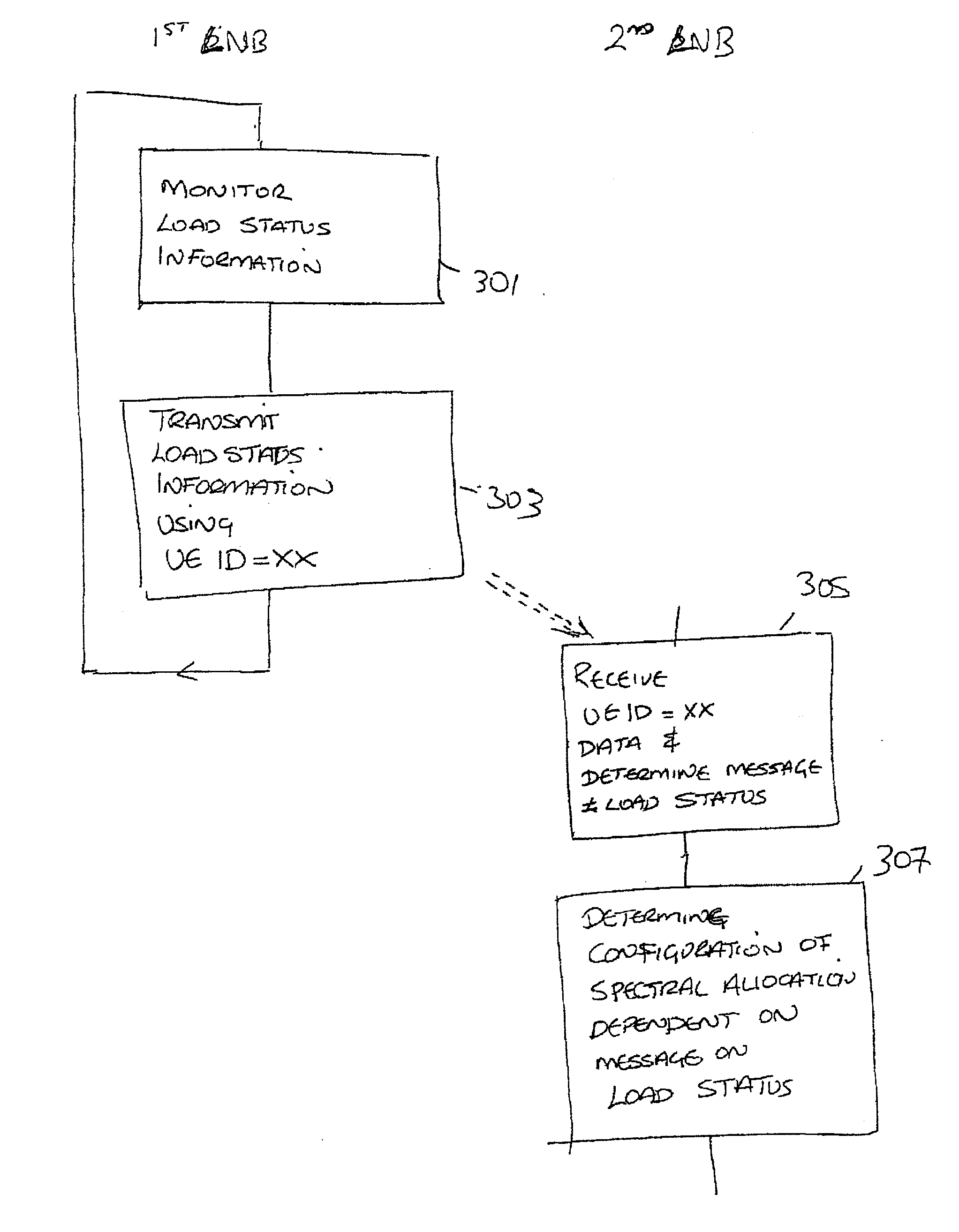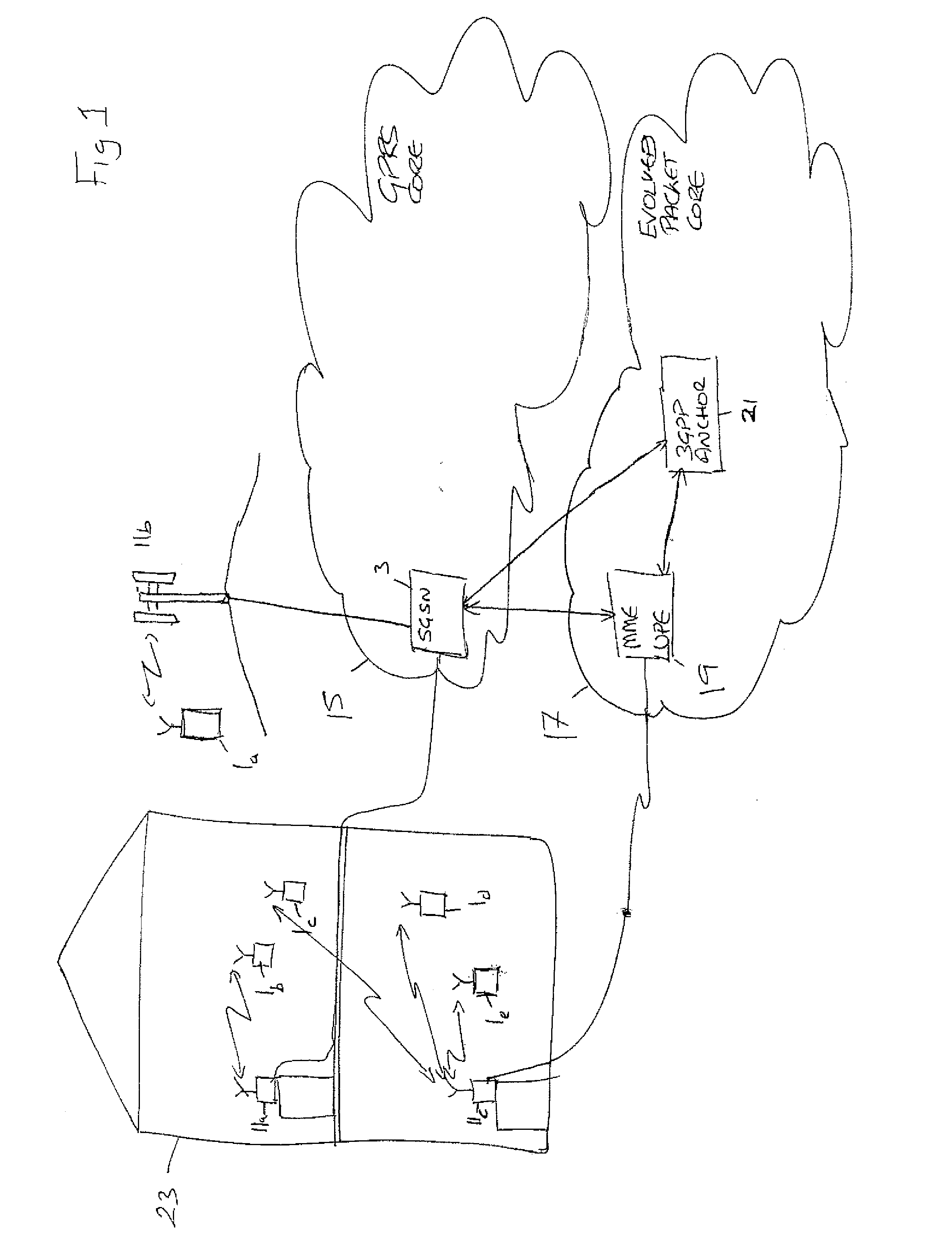Transmitting Node B Load Status Information in a Self Organising Network
a self-organising network and load status technology, applied in the direction of digital transmission, network topologies, electrical appliances, etc., can solve the problems of forced network reconfiguration over a large number of cells, interference and noise between cells and channels is likely to be severe, and the user equipment cannot reach the inside of the building
- Summary
- Abstract
- Description
- Claims
- Application Information
AI Technical Summary
Benefits of technology
Problems solved by technology
Method used
Image
Examples
Embodiment Construction
[0055]With respect to FIG. 1, a wireless communication system within which embodiments of the invention may be implemented is shown. FIG. 1 shows a conventional node B (NB) 11b which is arranged to communicate with a user device 1. The NB is furthermore configured to be connected to a serving GPRS support node (SGSN) 3. The serving GPRS support node (SGSN) is a network element responsible for the delivery of packet data to and from the mobile stations within a geographical service area via a series of node Bs or enhanced node Bs. The SGSN 3 tasks include packet routing and transfer, mobility management, logical link management and authentication and charging functions. The SGSN 3 is a component of the general packet radio services (GPRS) core 15.
[0056]The communication system shown in FIG. 1 furthermore shows a first local area node B 11a, and a further local area node B 11c. As indicated previously the access entities referred to as local area node Bs (LNB) are also known as home n...
PUM
 Login to View More
Login to View More Abstract
Description
Claims
Application Information
 Login to View More
Login to View More - R&D
- Intellectual Property
- Life Sciences
- Materials
- Tech Scout
- Unparalleled Data Quality
- Higher Quality Content
- 60% Fewer Hallucinations
Browse by: Latest US Patents, China's latest patents, Technical Efficacy Thesaurus, Application Domain, Technology Topic, Popular Technical Reports.
© 2025 PatSnap. All rights reserved.Legal|Privacy policy|Modern Slavery Act Transparency Statement|Sitemap|About US| Contact US: help@patsnap.com



